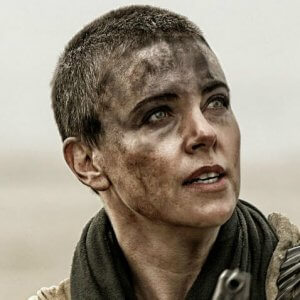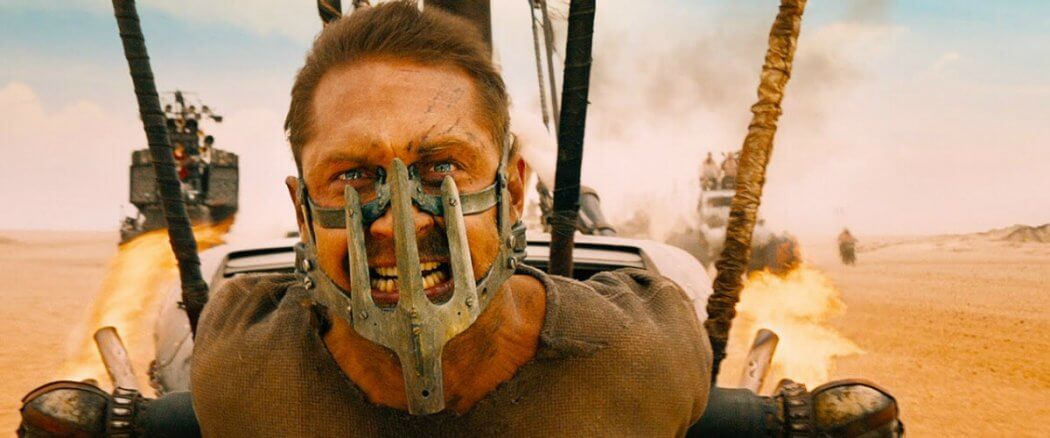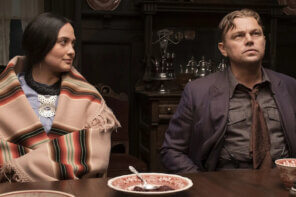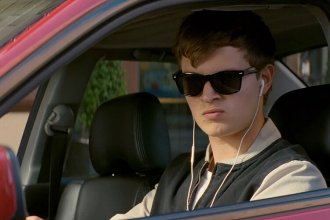The word “apocalypse” gets tossed around whenever a crisis breaks out. When the banks fail, people talk about a financial apocalypse. When Ebola spreads, people fear a disease-induced apocalypse. I even know a guy who’s stockpiling weapons for the zombie apocalypse. Seriously.
But what would an apocalypse really look like? Probably a lot like Mad Max: Fury Road.
Fury Road takes place in a world long in the wake of a global crisis. We don’t know what caused the meltdown; we just see the effects. No government. No money. No rules. Only a desert wasteland where people fight to the death in cars, motorcycles, and tanker trucks.
Max is our main character. The film opens with him captured by a tribe of skull tattooed warriors. Their general is Immortan Joe, a ghastly man who rules an encampment called “the Citadel”. Immortan Joe controls the water supply, and he gives his desperate citizens just enough to keep them coming back. But when his prized female warrior Furiosa escapes with the most valuable resource of all, Immortan Joe prepares for battle. And Max soon finds himself in the middle of a war.
A Visual Feast
Fury Road is a head popping explosion of color, image, and sound. The film feels like a ride, and there aren’t many stops along the way. The action scenes are long, but never boring. The tone is chaotic, but coherent. Anyone can string together mindless explosions, but it takes skill to orchestrate a crescendo of mayhem without ever losing the audience. This movie is an adrenaline rush from start to finish.
George Miller’s love for apocalyptic visions extends all the way back to the 70’s with the first Mad Max. He directed two more Mad Max films into the 80’s, but he’s never had the tools at his disposal that he has now. CGI makes anything possible in 2015. I can only imagine his excitement at finally getting everything out of his brain.
I was struck by the level of detail in every shot. There are so many interesting things to look at. Retro cars are driven by ghoulish characters with cancerous masses. The soldiers spray silver foam onto their teeth when they’re excited. A possessed guitar player dances around the stage of a semi-truck providing background music for the battle. Miller zooms in and around it all. From a purely visceral standpoint, this is about as exciting as films get.
Max Usurped
I wish I could say the same for our hero. Max turns out to be the least interesting character in Fury Road. He rarely talks. When he does, he mumbles. And when he mumbles, he has nothing to say. We see glimpses of a haunted past, but the details are scarce. Who’s the girl he keeps daydreaming about? A civilian? His daughter? We don’t know. We have no back story, and Max isn’t engaging enough to work without one.
 He’s also not a hero. Max has learned the need to survive at all costs, but the result is he’s reluctant to act heroically. He might have played fine as an anti-hero, but he does just enough good to nix that too. Max isn’t a hero or an anti-hero – he’s just there. As the title character of the film, that’s a problem.
He’s also not a hero. Max has learned the need to survive at all costs, but the result is he’s reluctant to act heroically. He might have played fine as an anti-hero, but he does just enough good to nix that too. Max isn’t a hero or an anti-hero – he’s just there. As the title character of the film, that’s a problem.
Thankfully, the characters surrounding Max are interesting. Nicholas Hoult is electrifying as one of Immortan Joe’s minions. He bounces around from moment to moment, living off the next high. Meanwhile, his soul and body are falling apart with each new blast of dust.
But the real showstopper is Charlize Theron as Furiosa. Theron is committed. This is no sex kitten. She’s bald, ticked off, and lethal. She’s also a poster child for feminism.
The F Word
Feminism gets a bad rap these days, especially in Christian circles. The term isn’t about man-hating or female superiority. It’s a cry for equality. Women can and should be able to do anything men can do at work, home, and the church. In Genesis 1:28, God tells both the man and woman to subdue the earth. Their pre-fall state was a partnership – the sexes working together side by side to take care of God’s creation.
Then came the fall with its hierarchies and patriarchies, and Christians somehow re-interpreted these things as God’s ideal. But in Christ, there is neither male nor female. In Christ, we are back in the garden as one.
Max and Furiosa work alongside each other interchangeably. Sometimes he drives the truck, sometimes she does. Max aims his gun to take out an enemy, but then realizes Furiosa is the better shot. He hands over the gun and steadies her arm. Neither one is inherently superior to the other. Neither gender defines a role. They play to their strengths and defer in their weaknesses. This is a partnership. This is feminism.
Our Hearts Revealed
If the darkest crevices of our hearts could be filmed, they would look like Fury Road. We’re a civilized society. We don’t drive around in mass packs trying to kill each other. But deep down, we’re not as civilized as we pretend to be. Fury Road makes explicit some important things that are hidden in modern day society. One of them is scarcity.
Immortan Joe hoards the precious resources his city needs to survive. His control of these resources keeps him in power and his citizens in bondage. The people come to his fortress with empty baskets. They need water. Their bodies are wasting away. If Immortan Joe gave up his stockpile for all to share, he’d lose his status and ultimately his control.
 Doesn’t this sound like America? The statistics of world poverty are widely known. More than one billion people in the world live on less than a dollar a day. Another one billion have no access to clean drinking water. 800 million people go to bed hungry every night. The numbers go on, but we’re numb to them. We have the resources in America to end this suffering, but giving up our excess would require changing our lifestyle, downgrading our status, and relinquishing our power.
Doesn’t this sound like America? The statistics of world poverty are widely known. More than one billion people in the world live on less than a dollar a day. Another one billion have no access to clean drinking water. 800 million people go to bed hungry every night. The numbers go on, but we’re numb to them. We have the resources in America to end this suffering, but giving up our excess would require changing our lifestyle, downgrading our status, and relinquishing our power.
Proverbs 18:11 says “A rich man’s wealth is his strong city, and like a high wall in his imagination.” We don’t think we’re rich, because we look around us and always see someone richer. But make no mistake, compared to the rest of the world, we’re the one percent.
Every day, the people come to Immortan Joe’s high wall in the rocks. He peers over and gives them his scraps. Are we guilty of doing the same?
The Wrong Road
What Fury Road desperately needs is a moral center. The film reveals the darkness of humanity, but provides little in the way of contrast. Flickers of light finally appear, but they don’t come until more than halfway into the movie. Even then, the result feels like too little, too late, with an ending that smacks of contrivance.
Even more problematic, the light doesn’t originate from our main character. Max openly scorns hope. He calls it a “mistake”. He eventually changes his mind, but only as an afterthought. He fights for good, but does he truly care?
I’m reminded of another movie with a similar title and landscape: The Road with Viggo Mortensen. The Road also takes place in a bleak, post-apocalyptic world, but with a moral center from the start. The main characters are a father and son. From minute one, we see love, innocence, and tenderness in their relationship – attributes that contrast starkly with the oppression around them. In a world full of violent cannibals, this father and son are willing to lay down their lives for each other.
Fury Road feels like an empty shell by comparison – a shiny shell, yes, but one without a center all the same. The film needed more light from the start, organically, from our hero. Furiosa may be looking for redemption, but it’s the darkness around her that leaves the most lingering impression. When I look back on Fury Road, I remember cars, skulls, and explosions. When I look back on The Road, I remember a father’s love for his son. The Road, though set in an even bleaker dystopia, offers hope at its core.
Is the world of Mad Max possible? Absolutely. The imagery of Revelation is right at home in a land of dust and death. But even then, the kingdom of God will shine brighter than the darkness. Even then, hope will get the final word.





